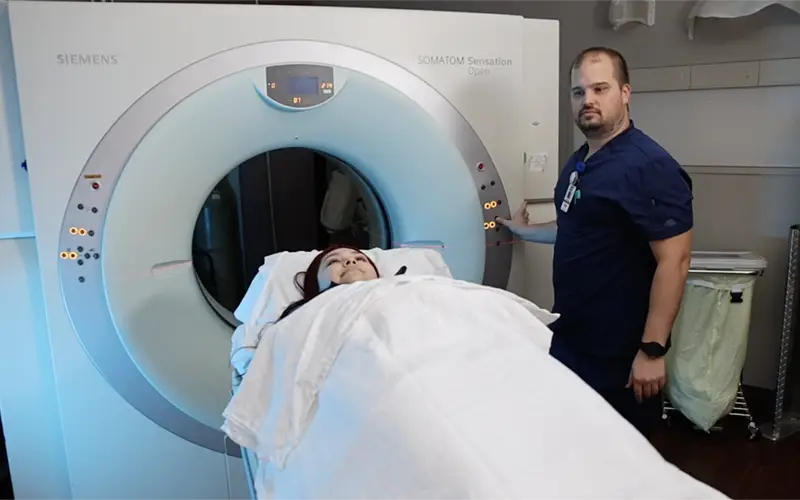Stereotactic Radiosurgery
Stereotactic Radiosurgery (SRS) is a specialized radiation therapy that is commonly used to treat patients with brain tumors, arteriovenous malformations, pituitary tumors, acoustic neuromas, and other abnormalities in the brain. SRS is often the preferred option for patients who aren't candidates for surgery or are seeking a non-surgical alternative.
SRS can frequently achieve the same therapeutic effects as surgery or other radiation techniques but with fewer side effects.
Stereotactic Body Radiation Therapy
Stereotactic Body Radiation Therapy (SBRT) is a type of radiation therapy that delivers high doses of radiation in only a few treatment sessions. SBRT uses multiple beams for focused radiation delivery, precisely targeting the tumor with high doses of radiation while minimizing exposure to surrounding healthy tissue.
This therapy is used for small tumors that haven't spread to other parts of the body.
Image Guided Radiation Therapy
Image Guided Radiation Therapy (IGRT) is a type of radiation therapy that uses advanced imaging technology to deliver precise targeted radiation to cancerous cells while sparing surrounding healthy tissue. This technology uses MRI, PET, and CT scans to precisely locate tumors in the body during treatment. Then, the radiation beams are adjusted to match the size, shape, and location of the tumor, ensuring that the radiation dose is delivered to the tumor with a higher degree of precision.
IGRT is particularly useful for tumors in organs like the lungs that move during treatment.
High-Dose Rate (HDR) Brachytherapy
High-Dose Rate (HDR) Brachytherapy is a type of radiation therapy that inserts a small radioactive pellet into or near the tumor for a very short period - typically only a few minutes - for highly targeted treatment with extreme accuracy. This technique allows for a high dose of radiation to be delivered directly to the tumor while minimizing damage to surrounding healthy tissues.
Frequently, HDR brachytherapy requires only one treatment, but sometimes more than one session is needed. HDR brachytherapy is used to treat cancers of the cervix, prostate, and breast, among others.
Volumetric Modulated Arc Therapy
Volumetric Modulated Arc Therapy (VMAT) is an advanced radiation technique that uses computer-controlled radiation beams with variable intensity to deliver high doses of radiation directly to the tumor while protecting surrounding healthy tissue.
VMAT uses a specialized radiotherapy machine called a linear accelerator (LINAC) to deliver radiation in a 360-degree arc around the patient. The radiation dose is delivered while the machine rotates, minimizing the amount of radiation that healthy tissues receive.

